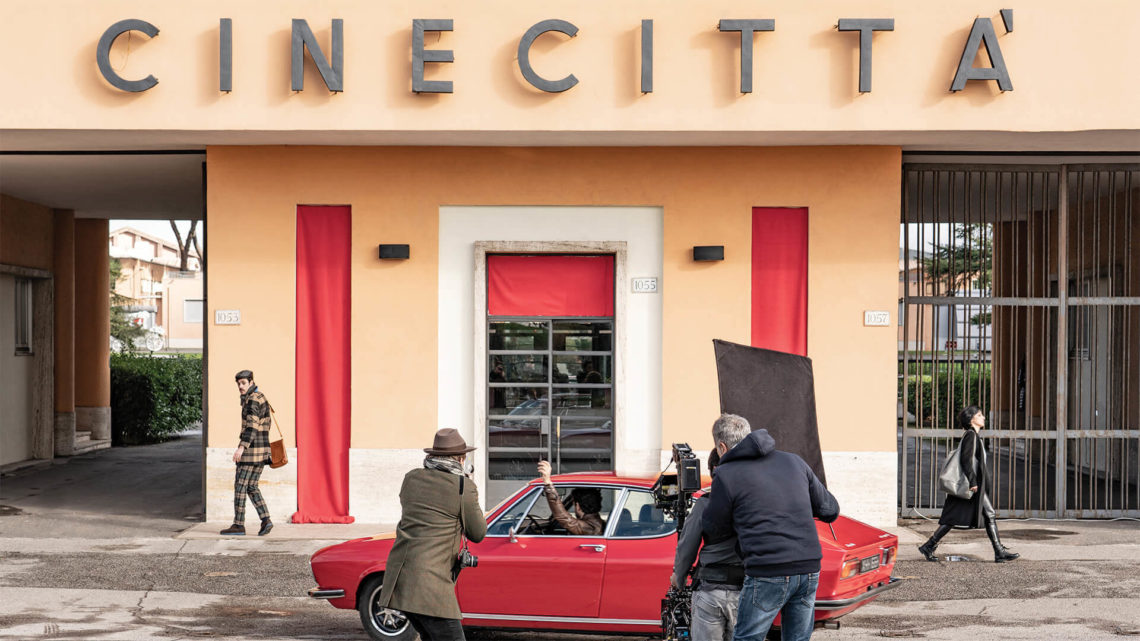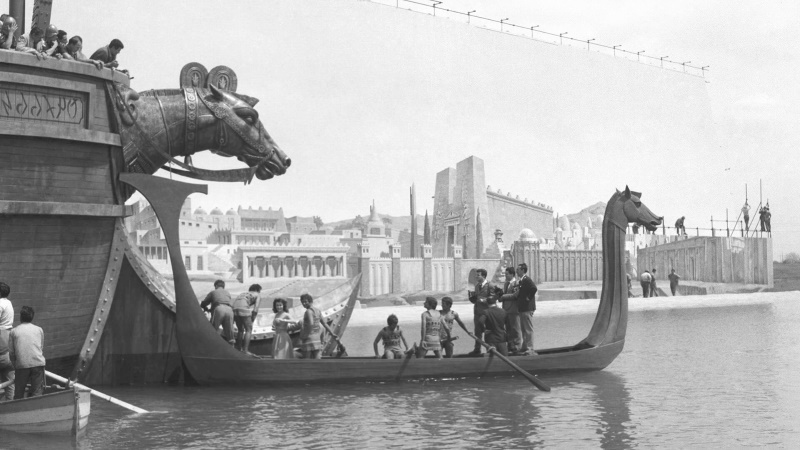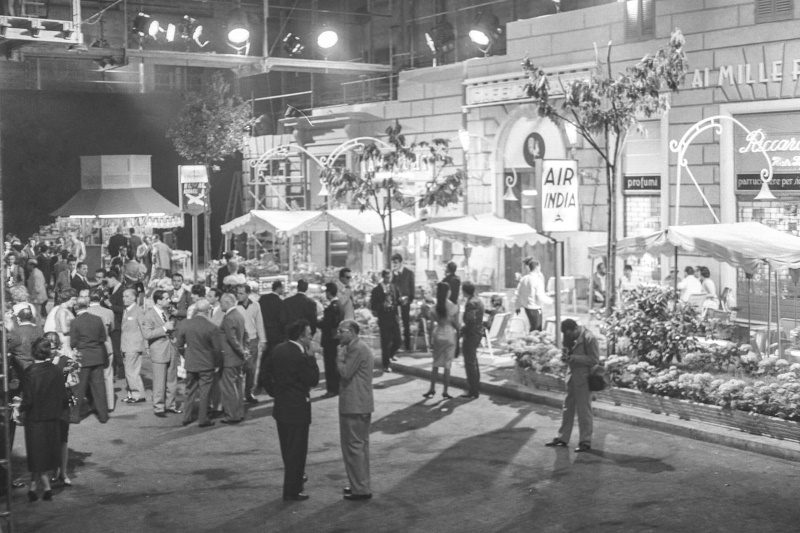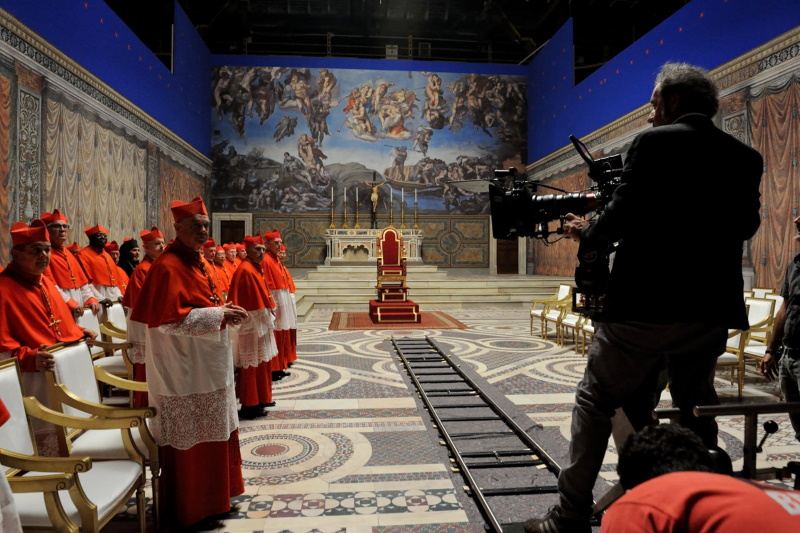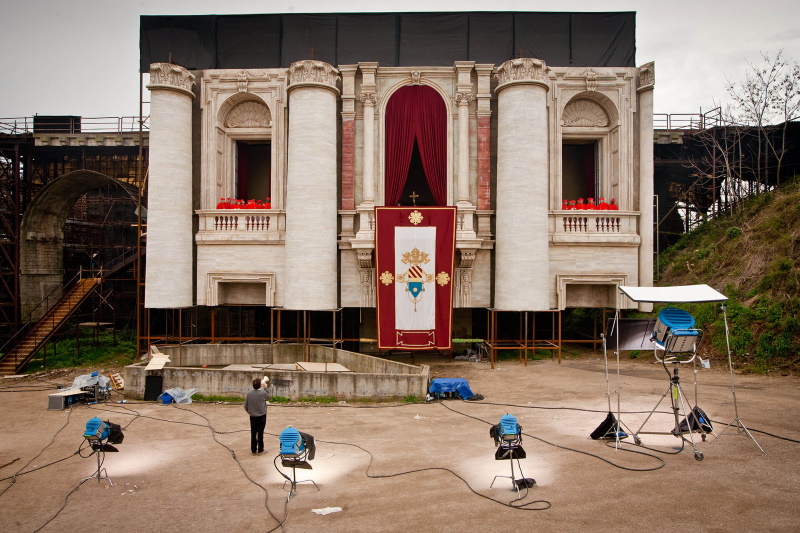Through their cinematic productions, the Cinecittà Studios epitomise the Italian dolce vita, bringing this fantasy to life in Italian cinema during the 1950s and 60s.
Hollywood on Tiber: it wasn’t long before people were using this term in reference to Cinecittà. Indeed, when Europe’s largest industrial film complex was founded in 1936, it had its sights firmly set on competing with American production. Quite the ambition!
Six miles outside the centre of Rome, the so-called ‘city of cinema’ has since opened its doors to members of the public, who were first given the opportunity to visit its sets 10 years ago. The site boasts a surface area of more than 60 hectares housing 73 buildings dedicated to cinema, including 16 stage areas, 75 kilometres of street and more than three hectares of garden – plus it even has two large swimming pools to represent the ocean on camera.

It’s clear that this huge filming space was designed to be self-sufficient in terms of facilities, people and equipment. There are no less than 21 film sets.
Within six years of its inauguration, some 300 films had been shot there. While the earliest films had links to the Mussolini government (one of Cinecittà’s original aims was to deliver the Italian leader’s vision through propaganda), the fall of the Fascist regime opened up a whole new form of production which caught the attention of the very best upcoming filmmakers in post-war Italy. Luchino Visconti (Death in Venice, The Leopard, etc.), Roberto Rossellini (Rome, Open City) and Vittorio De Sica (Bicycle Thieves) all made regular appearances at the Cinecittà Studio. Fellini shot most of his films there, including La Dolce Vita starring Marcello Mastroianni, Anita Ekberg and Anouk Aimée (1960).
The dream factory was firing on all cylinders, with Cinecittà providing a creative European counterbalance to the global dominance of American production after the end of the Second World War. Some American film directors even went as far as deserting Hollywood because the budding talent was in Italy and film budgets over in the States were yet to go through the roof. It was the golden age of Italian cinema, with films broadcasting a certain idea of elegance, romance and lifestyle across the world – this would come to be known as ‘la dolce vita’. Italian actresses became household names, with the likes of Sophia Loren, Claudia Cardinale, Gina Lollobrigida, Anna Magnani and Monica Vitti all featuring on the film credits. Without Cinecittà, these actresses probably wouldn’t have gained the international visibility and recognition they enjoy today.
The 1950s and 60s were also defined by the major Italian ‘peplums.’ From Quo vadis and Ben Hur to Cleopatra, more than 300 cinematic reconstructions of antiquity were filmed at the studios, before Sergio Leone’s spaghetti westerns took centre stage in the decades to follow. Everything was possible at Cinecittà, like when a church was erected there after religious leaders banned the filming of Don Camillo in places of worship, and more recently, when Paolo Sorrentino replicated many of the Vatican buildings for his series The Young Pope (2016) and The New Pope (2019).
The Cinecittà legend lives on, with film directors sometimes considering its sets and artistry worthy of their projects, including Martin Scorsese, who decided to leave the United States to film all the outdoor scenes of Gangs of New York at the Italian studios. Founded in the turbulent times of Fascist Italy, Cinecittà broke free from its extreme right-wing shackles to become an international benchmark in independent film production. Today visitors flock in their thousands to these filming locations. The legend is far from over.

